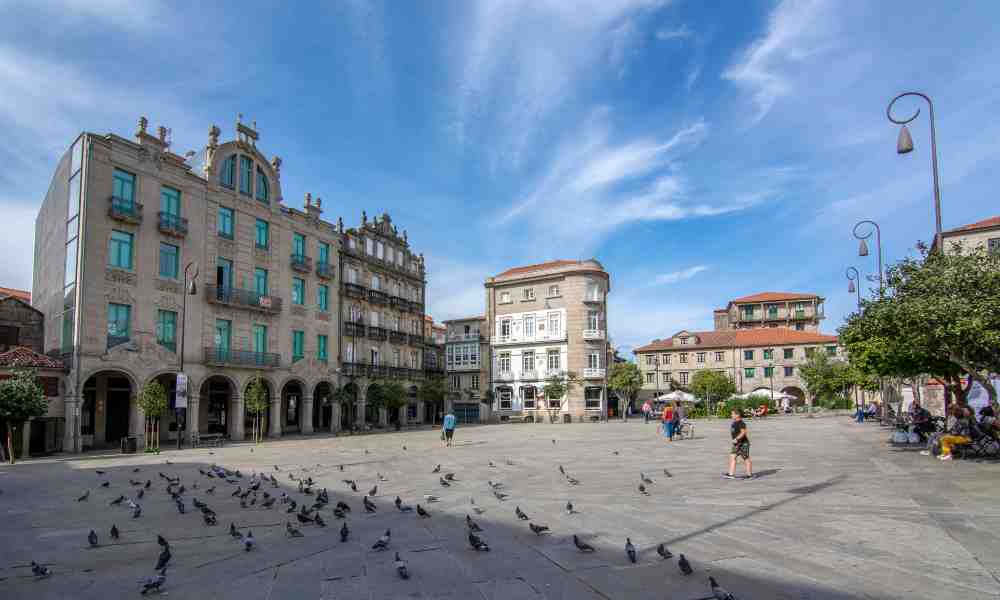Car-free city areas are emerging worldwide, presenting a transformative vision for urban life. These futuristic landscapes prioritize greenways, pedestrian walkways, and efficient public transport over traditional traffic-oriented roads. The shift towards car-free cities holds immense potential to positively impact the environment, public health, and overall quality of life.
Breaking Free from Car Dominance: A Global Movement
Around the world, residents are embracing the idea of reducing car usage in cities. A survey for the Clean Cities Campaign in major European cities found that 62% of respondents supported car-free days to reduce oil dependency. This growing movement is set to revolutionize urban planning and create cleaner, healthier, and more connected communities.
Pontevedra: Paving the Way for Car-Free Success
Pontevedra, a Spanish city, serves as an inspiring example of the benefits of going car-free. The mayor, Miguel Anxo Fernandez Lores, took a radical step in 1999 to pedestrianize the entire 300,000 square meters of the city center. By restricting vehicle access and creating a car-free zone, Pontevedra transformed from a congested, polluted city into an oasis for pedestrians and cyclists. The success of Pontevedra’s model has garnered international recognition and accolades from the United Nations and the European Union.

A Paradigm Shift in Urban Design
Car-free cities implement various strategies to reduce car usage and prioritize sustainable modes of transportation. They focus on creating vibrant pedestrian walkways, expanding green spaces, and providing efficient public transport options. By encouraging cycling and walking, car-free cities promote physical activity, leading to healthier, more active communities.
Challenges on the Road to Car-Free Urban Living
Although the concept of car-free cities is gaining traction, there are challenges to overcome. Shifting public attitudes and behavior towards more sustainable transportation options can be a formidable task. Businesses reliant on car traffic may resist changes that impact their customer flow. Furthermore, the necessary infrastructure changes can be costly and time-consuming. However, these challenges can be addressed through effective community engagement and comprehensive urban planning.
From Vision to Reality: Successful Car-Free City Examples
Several cities worldwide have embraced car-free initiatives and achieved remarkable success. Venice, Italy, renowned as the “Floating City,” is a remarkable example, relying on waterways and footpaths for transportation. In Vauban, Germany, a car-free neighborhood exemplifies sustainable urban planning. Copenhagen, Denmark, has prioritized bike lanes and pedestrian streets to encourage active transportation. Other cities like Oslo, Norway, and Madrid, Spain, have introduced car-free zones in their city centers to mitigate traffic congestion and improve air quality.
Strides Towards a Sustainable Future
The movement towards car-free cities is gaining momentum as cities take incremental steps towards the goal. Car-free zones in specific areas, investments in public transport, and bike infrastructure are becoming more prevalent. Incentives such as free bike rentals and discounted public transit passes encourage residents to embrace alternative transportation modes. With thoughtful planning and community involvement, cities can overcome challenges and embark on the path to becoming greener, healthier, and more sustainable urban environments.
Embracing the vision of car-free cities offers the promise of a future where people and communities thrive while fostering a healthier planet for generations to come. By prioritizing pedestrians, cyclists, and public transport over cars, cities can create vibrant and livable spaces that redefine the urban experience. As the movement gains momentum, cities worldwide are taking bold steps towards a car-free future, setting a course towards a more sustainable and interconnected world.
